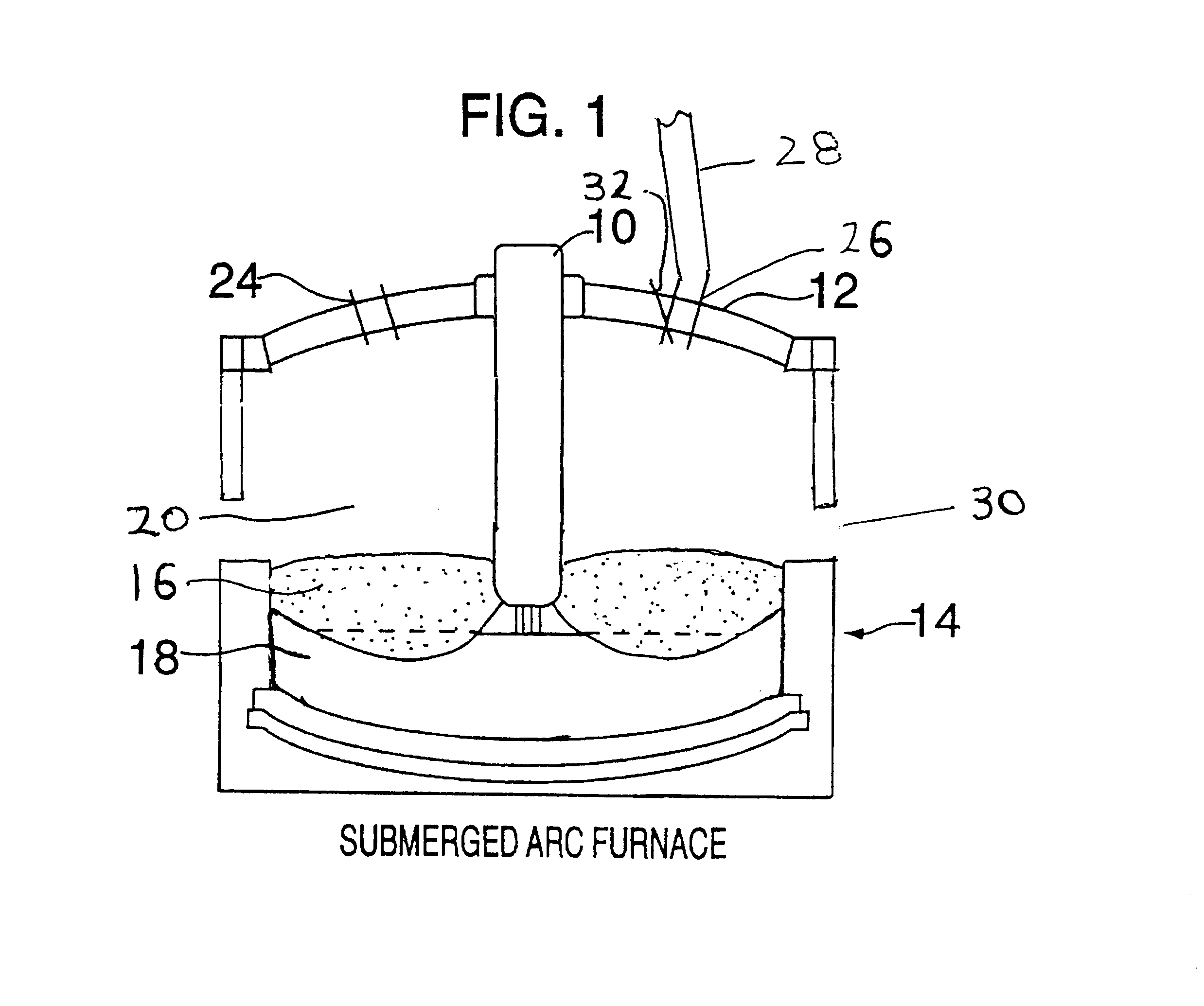Method for production of white microsilica
a microsilica and white technology, applied in the field of methods, can solve the problems of high cost, health risk, and inability to control the crystalline sio.sub.2, and achieve the effect of high reflectivity and high reflectivity
- Summary
- Abstract
- Description
- Claims
- Application Information
AI Technical Summary
Benefits of technology
Problems solved by technology
Method used
Image
Examples
example 2
In the same smelting furnace as used in Example 1, 75% FeSi was produced using a charge consisting of quartzite as SiO.sub.2 source and a reduction agent mixture consisting of 80% by weight of coke having a content of volatile matter of 5.2% by weight, and 20% by weight of coal having a content of volatile matter of 33.8% by weight.
The charge was added to the furnace in an amount of 16.32 tons per hour and from the smelting furnace 5.40 tons of 75% FeSi was tapped per hour, while 0.56 tons per hour of microsilica was recovered from the furnace off-gases. The temperature in the furnace gas atmosphere at the top of the furnace was kept constant at 700.degree. C., thus the complete gas atmosphere in the furnace was 700.degree. C. and above.
The power consumption per ton produced ferrosilicon was 7.5 Mwh. The ratio between the amount of volatile matter in the reduction agents and kg produced microsilica was 1.00.
Samples of the produced microsilica were drawn at intervals during the furna...
example 3 (
Comparison)
For comparison purposes the furnace was operated using a conventional reduction agent mixture consisting of 65% by weight of coal and 35% by weight of coke. The ratio between volatile matter in the reduction agent mixture and the amount of produced microsilica was 1.90. The temperature at the top of the furnace was also in this example kept at 700.degree. C. The production of 75% FeSi per hour was the same as in Examples 1 and 2 and the power consumption per ton produced ferrosilicon was 7.7 Mwh.
Samples of the produced microsilica were drawn at intervals and the reflectivity was measured. The results showed that the produced microsilica had a reflectivity of 40.
A comparison of the results in Examples 1 and 2 and the results in Example 3 shows that by the method of the present invention a substantial increase in whiteness of the produced microsilica is obtained at the same time as the power consumption and the yield of FeSi is not affected. This is very surprising as the p...
PUM
| Property | Measurement | Unit |
|---|---|---|
| reflectivity | aaaaa | aaaaa |
| temperature | aaaaa | aaaaa |
| temperature | aaaaa | aaaaa |
Abstract
Description
Claims
Application Information
 Login to View More
Login to View More - R&D
- Intellectual Property
- Life Sciences
- Materials
- Tech Scout
- Unparalleled Data Quality
- Higher Quality Content
- 60% Fewer Hallucinations
Browse by: Latest US Patents, China's latest patents, Technical Efficacy Thesaurus, Application Domain, Technology Topic, Popular Technical Reports.
© 2025 PatSnap. All rights reserved.Legal|Privacy policy|Modern Slavery Act Transparency Statement|Sitemap|About US| Contact US: help@patsnap.com

